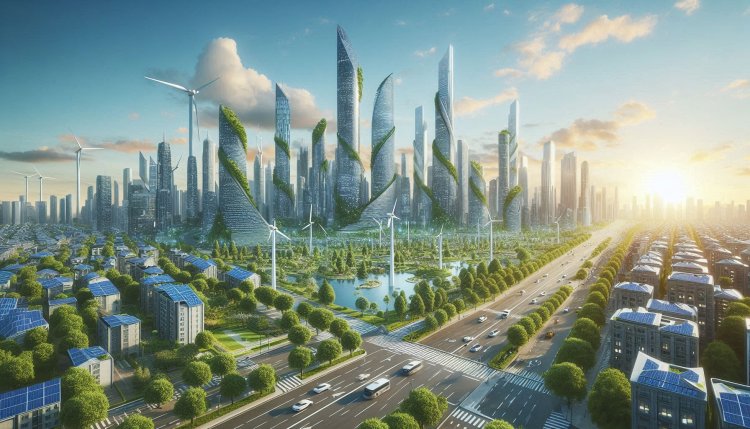Renewable Energy and the Built Environment
Explore the intersection of renewable energy and sustainable design in the built environment. Discover innovative solutions for a greener future.

Renewable Energy and the Built Environment
The built environment plays a crucial role in the transition towards a sustainable future, and renewable energy is a key component of this transition. By integrating renewable energy technologies into buildings and infrastructure, we can reduce our dependence on fossil fuels, lower greenhouse gas emissions, and create more resilient communities. Here are some key aspects of renewable energy in the built environment:
1. Solar Power
Solar power is one of the most widely used renewable energy sources in the built environment. Photovoltaic (PV) panels can be installed on rooftops, facades, or as part of building-integrated systems to generate electricity from sunlight. Solar power can help buildings become more self-sufficient and reduce their reliance on the grid, especially in areas with abundant sunshine.
2. Wind Power
Wind power is another renewable energy source that can be harnessed in the built environment. Wind turbines can be installed on buildings or in nearby open spaces to generate electricity. While large-scale wind farms are more common in rural areas, smaller wind turbines can also be integrated into urban environments to supplement energy needs.
3. Geothermal Energy
Geothermal energy utilizes the heat stored beneath the Earth's surface to provide heating and cooling for buildings. Geothermal heat pumps can be installed in buildings to transfer heat from the ground in the winter and release heat into the ground in the summer, making them an efficient and sustainable heating and cooling solution.
4. Biomass Energy
Biomass energy involves using organic materials such as wood, crop residues, or waste to generate heat or electricity. Biomass boilers can be used in buildings to provide heating and hot water, while biogas production facilities can convert organic waste into renewable energy. Biomass energy can help reduce landfill waste and lower carbon emissions.
5. Energy Efficiency and Passive Design
While renewable energy technologies are important, energy efficiency measures and passive design strategies are also crucial in the built environment. Improving insulation, using energy-efficient appliances, and designing buildings to maximize natural light and ventilation can reduce energy consumption and make renewable energy systems more effective.
6. Energy Storage
Energy storage technologies such as batteries can help overcome the intermittent nature of renewable energy sources like solar and wind power. By storing excess energy generated during sunny or windy periods, buildings can ensure a continuous power supply even when the sun is not shining or the wind is not blowing. Energy storage is essential for increasing the reliability of renewable energy systems.
7. Smart Grids and Energy Management Systems
Smart grids and energy management systems can optimize the integration of renewable energy sources into the built environment. These systems can monitor energy consumption, manage energy flows, and prioritize the use of renewable energy to reduce costs and environmental impact. By intelligently managing energy resources, buildings can become more sustainable and resilient.
8. Policy and Regulations
Government policies and regulations play a crucial role in promoting the adoption of renewable energy in the built environment. Incentives such as tax credits, rebates, and feed-in tariffs can encourage building owners to invest in renewable energy technologies. Building codes and standards can also require the integration of renewable energy systems in new construction and renovations.
9. Economic Benefits
Renewable energy in the built environment can bring significant economic benefits. By generating electricity on-site, buildings can reduce their energy bills and potentially earn revenue by selling excess energy back to the grid. Investing in renewable energy technologies can also create jobs, stimulate economic growth, and attract investment in clean energy industries.
10. Environmental Impact
Switching to renewable energy in the built environment can have a positive impact on the environment. By reducing reliance on fossil fuels, buildings can lower their carbon footprint and contribute to mitigating climate change. Renewable energy technologies also have lower air and water pollution impacts compared to traditional energy sources, leading to cleaner and healthier communities.
Overall, renewable energy plays a vital role in transforming the built environment into a more sustainable and resilient space. By integrating solar power, wind power, geothermal energy, biomass energy, and energy efficiency measures, buildings can reduce their environmental impact, lower energy costs, and enhance the quality of life for occupants.
What's Your Reaction?

















